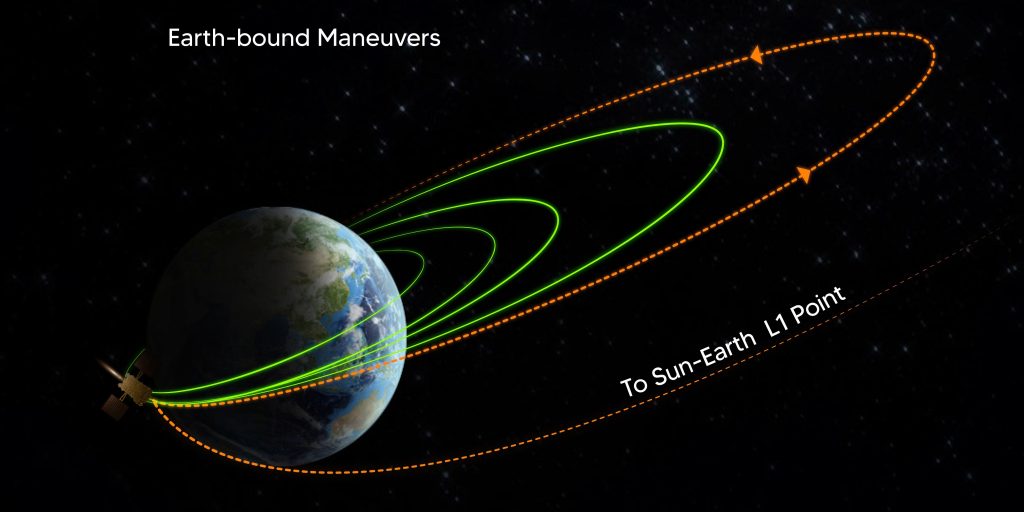
Aditya-L1: India's Solar Observer Embarks on Historic Journey
Aditya-L1, India’s first spacecraft for studying the Sun, was successfully pushed to a new orbit on Friday, according to ISRO. The newly attained orbit, which has a size of 256 by 121,973 kilometers, will soon reach its next goal, the Trans-Lagrangian Point 1 insertion (TL1I), when it departs Earth on September 19 at 2:00 a.m. (IST).
In order to study the Sun from the Sun-Earth Lagrangian Point 1 (L1), which is located roughly 1.5 million kilometers from Earth, Aditya-L1 is the first space-based observatory launched by India. Following the first, second, and third Earth-based maneuvers carried out on September 3, 5, and 10, respectively, this represents the fourth successful mission.
“The fourth Earth-bound manoeuvre (EBN#4) is performed successfully. ISRO’s ground stations at Mauritius, Bengaluru, SDSC-SHAR and Port Blair tracked the satellite during this operation, while a transportable terminal currently stationed in the Fiji islands for Aditya-L1 will support post-burn operations,” the space agency said in a post on X, a platform formerly known as Twitter.
The spacecraft will perform maneuvers to gain the necessary velocity for its subsequent voyage to the L1 Lagrangian point, which marks the start of its roughly 110-day transfer orbit, during its 16-day ascent through space.
After reaching the L1 point, the Aditya-L1 spacecraft will orbit with another satellite, forming a class of satellites that revolves around the L1 Lagrangian point, a stable gravitational location between the Earth and the Sun. It will provide information on various solar activities.
Aditya-L1 Mission:
The fourth Earth-bound maneuvre (EBN#4) is performed successfully.ISRO’s ground stations at Mauritius, Bengaluru, SDSC-SHAR and Port Blair tracked the satellite during this operation, while a transportable terminal currently stationed in the Fiji islands for… pic.twitter.com/cPfsF5GIk5
— ISRO (@isro) September 14, 2023
Aditya-L1 is equipped with seven scientific payloads created domestically by ISRO and national research organizations, including as the Inter-University Centre for Astronomy and Astrophysics (IUCAA) in Pune and the Indian Institute of Astrophysics (IIA) in Bengaluru.
The dynamics of fields and particles near the Sun, coronal heating, coronal mass ejections, pre-flare and flare activity, and other aspects of solar activity will all be better understood by researchers with the use of these technologies. The payloads will use magnetic field imaging detectors to study the corona, the Sun’s outermost region of atmosphere. Four of them will see the Sun directly from the unusual L1 Lagrangian point, providing critical scientific data on the growth and spread of solar disturbances in the interplanetary medium. The three remaining payloads will study nearby particles and fields.
Important information regarding solar dynamics and its impacts on space weather are expected to be revealed through studying coronal heating experiments, coronal mass ejection research, pre-flare and flare activity, and the genesis of the solar wind.



